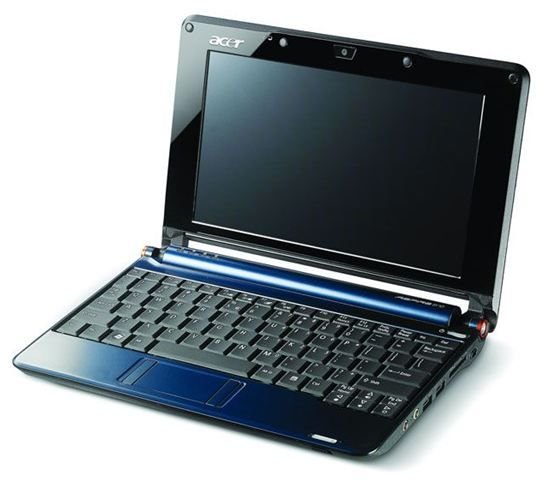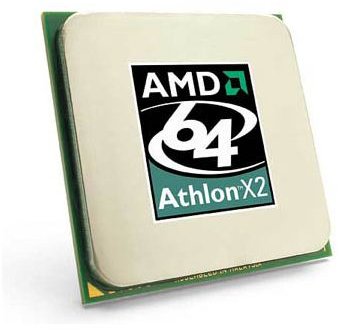5 Best PC Upgrades of 2008 - What Should You Buy?
A Good Year For The PC
Despite the economic downturn - which has taken the edge off the sales of both retail PCs and the components used to build them - this has been a very exciting year for PC enthusiasts. We have we seen the introduction of a brand-new processor architecture from Intel, along with the associated new chipset and a valid reason to buy DDR3 RAM. Core 2 Duos and Phenoms have both become easily affordable. The video card market was turned on its ear by the debut of AMD’s new 4xxx series cards, which have returned competition to the market and resulted in a price war which had provided consumers with the best video card prices in recent memory. And that is only the tip of the iceberg - chipsets, integrated video, GPGPU computing, and various other markets and technologies have seen surprising advances.
But a year of great new products and technologies begs the question - are they worth the money, or am I better off upgrading my PC with older, more mundane parts? That is, of course, a complex question, but I’ve rounded up five of the best upgrades available at the end of this year. Some are old friends, and some are brand-new for 2008, but they’re all great values.
AMD Athlon X2 Processors
It is now very clear that AMD is unable to compete with Intel in terms of performance, and will probably not be able to catch up for years, if ever. But there is some light at the end of the tunnel for AMD, because while they may have lost the ability to outperform Intel in clock-for-clock performance, the PC market has changed. Average users no longer need to buy high-end processors for day-to-day tasks, and ever gamers, who have long been consumers of high-end, high-profit processors, no longer need the latest CPUs to run graphically intense games.
As a result, older, cheaper offerings from AMD and Intel start to look far more attractive than newer, more expensive models, and it is in this market that AMD’s older Athlon X2 processors deserve mention. With low cost offerings such as the Athlon X2 4200+ going for only 37.99, AMD’s Athlon processors are perfect for purpose-built home office and home theatre PCs. This is particularly true due to the strength of AMD’s associated chipsets, such as the 780G, which features integrated graphics strong enough to easily run Windows Vista Aero and even decode high-resolution video.
Video Cards
Once upon a time, a video card was an upgrade only worthy of dedicated gamers. This was partially because games, before the days of The Sims and World of Warcraft, with a rather niche market, and also partially because video cards were outragesouly expensive, costing hundreds of dollars for mid-range models.
But times have changed. Besides games, video cards are now useful - in fact, often times necessary - for decoding high-resolution video, and there is a great deal of evidence that graphic cards will soon be used for a variety of tasks, including rendering your desktop. Integrated graphics solutions, which have long been extremely weak, are becoming less appealing due to the limits the impose on how a person can use their computer. As a result, the idea of buying a discrete graphics card, or a chipset which uses a graphics solution derived from a discrete graphics card, has become popular.
More importantly, prices have plummeted. After a long period of dominance, Nvidia no longer is king. AMD now offers cards which are competitive at every price bracket, and also offerings the fastest single video card, the Radeon 4870X2. As a result of this competition, mid-range graphics cards are incredibly affordable. The Radeon 4830 can be had for $84.99 after rebate. At that price, a solid graphics card that is capable of performing all of today’s tasks, and which should continue to be a solid performer for several years, is an attractive upgrade. You can find more video card upgrade tips here.
Additional RAM

This is one upgrade recommendation that makes just about every best-of list, and for good reason. Adding additional RAM to your system can increase performance in numerous applications, particularly if you own Windows Vista, which will cache additional information if you have RAM to spare. RAM is also a wonderful upgrade because it is so easy to install memory. Simply slip it into the slot, and you’re basically ready to go. There are no drivers to install, and RAM is fairly forgiving in terms of compatibility, though mix and match should be avoided as performance is limited to the slowest module.
And the deal only gets better from there. While additional RAM has always been a recommended upgrade, it is even more attractive now. RAM is cheaper now that is has ever been in the past, with 4GB kits of reasonably fast DDR2 RAM costing around forty to fifty dollars, and 4GB of very fast 1066Mhz DDR2 (reveiwed here) for under a hundred. That is a massive amount - if you’re a home user with only 1GB of RAM, you probably only need to buy another 1GB to dramatically increase performance. And for the record, 1GB of RAM can be had for 10.99.
Intel Core i7 965 (And Intel X58 Chipset)
Intel’s new Core i7 processors are now readily available, and in terms of performance, they don’t disappoint. While they don’t necessarily blow Core 2 Quads away when running every day applications, Core i7 provides massive performance increases when running CPU-intensive programs like graphics editing software. Once again, Intel has proved itself the performance leader - if you need to have the fastest, then you need to buy Intel.
And when it comes to the Core i7 series, the Core i7 965 Extreme Edition is Intel’s fastest. With a price of slightly over one thousand dollars, this is not a value processor. That said, if you’re looking at these sorts of processors, it is doubtful that value is your primary concern. Instead, you’re probably looking for the fastest processor possible, and that is exactly what the Core i7 965 Extreme Edition is.
Yet in a way, the Core i7 965 Extreme Edition is actually not over-priced. It is actually priced lower than Intel’s Core 2 Quad Extreme processors, which it certainly out-performs, and while the X58 chipset is much more expensive than the P45 chipsets that are suitabl for regular Core 2 Quads, it is actually not priced very highly for a brand-new enthusiast level chipset. In fact, some X58 chipsets are currently less expensive than X48 chipsets. For a brand-new high-end chipset, that is unprecedented.
If you’re looking to have the fastest computer in town, there really isn’t any other option to consider.
Netbooks
No, a netbook isn’t technically an upgrade. You don’t put one anywhere in your desktop PC, nor does it enhance the performance of any existing hardware. In fact, netbooks are generally slow machines, as a rule.

But look at their prices. An Acer Aspire One with Windows XP and 1GB of RAM will only set you back around $350-$400 dollars. That is less than the cost of upgrading to Intel’s Core i7, or the cost of buying a high-end GPU, or the cost of buying a 24" monitor. And while you don’t directly increase the performance of your existing PC, you gain an ultraportable, which is an outstanding addition to your PC stable. Think of it this way - your netbook is simply a miniature, lower-powered, version of your Home PC, so you can take it anywhere, and it will run for up to seven hours off a single charge of its battery.
If you already own a fast desktop system, but you don’t own a laptop, then there probably isn’t any better upgrade. Why buy a Core i7, the chipset, and the DDR3 RAM, which will merely increase your FPS in most video games from incredible to insane, when you can buy a netbook that will allow you to do most of the non-gaming things you do on your desktop, but can be used virtually anywhere?
